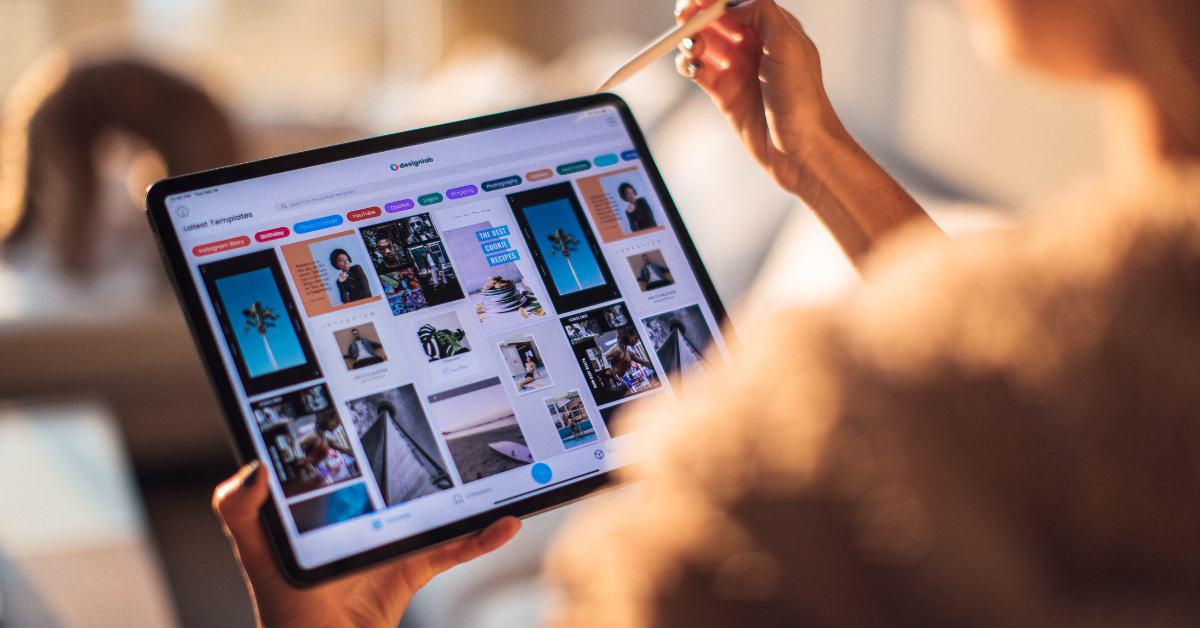Tablets & Detachables: 2024 Year-In-Review
The tablet and detachable market evolved steadily in 2024, with manufacturers focusing on refining their hardware and software offerings to cater to a diverse range of users. Tablets increasingly served dual purposes as entertainment hubs and productivity tools, while detachable devices continued to bridge the gap between laptops and tablets, appealing to hybrid work and educational needs.
Read through all the 2024 pricing and promotions insights below or email the report to read later.
Key Product Launches & Updates
Apple’s iPad Lineup Additions
Apple updated its iPad Pro models with the M4 chip, delivering improved performance and power efficiency. The iPad Pro maintained its position as a market leader for creative professionals and power users, with advanced multitasking capabilities introduced in iPadOS 18.
Accompanying its chipset upgrade, the premium flagship tablet from Apple saw its display break into the OLED space, putting pressure on Samsung’s AMOLED displays. Additionally, Apple’s iPad Air 6 upgraded to the M2 chipset, offering improved performance. Available in 11” and 13” sizes, it provides storage options ranging from 128GB to 1TB.
Meanwhile, the iPad mini received incremental updates, emphasizing affordability and education-friendly features. Apple’s discounting saw an increase in 2024 with much more aggressive discounts in the second half of the year with success seen on its older iPad Pro 5 and now aging standard iPad.

Samsung Galaxy Tab Series
Samsung’s flagship Galaxy Tab S10 Ultra was one of the standout tablet releases of 2024, showcasing Samsung’s commitment to premium design, cutting-edge hardware, and AI-driven software enhancements. The Tab S10 Ultra builds on the success of its predecessors, offering a large Super AMOLED display with a 120Hz refresh rate for smooth visuals and vivid colors. Powered by the latest MediaTek chipset, this tablet delivers robust performance suitable for productivity tasks, creative applications, and immersive gaming.
The device also integrates advanced AI capabilities, such as scene optimization for photography and AI-driven multitasking features that enhance user efficiency. Its compatibility with the S Pen remains a highlight, appealing to artists and professionals alike. Samsung has expanded its
One UI ecosystem with updates that enhance cross-device functionality, making the Galaxy Tab S10 Ultra a versatile tool for users deeply integrated into Samsung’s hardware ecosystem. Additionally, Samsung continues to focus on sustainability by introducing recycled materials into its tablet production process.
Beyond the Galaxy Tab S10 Ultra, Samsung refreshed its mid-range Galaxy Tab A series in 2024, targeting budget-conscious consumers with improved displays and better battery life.
Additionally, while the Tab S10 Ultra targeted premium users, the more affordable Tab S10 FE focused on mainstream consumers. These updates ensure that Samsung retains its strong position across all price tiers in the tablet market.

Amazon’s Fire HD 8 (2024 Edition)
Amazon updated its Fire HD 8 tablet, offering it at a competitive price point. The 2024 edition features a 5MP rear camera, with configurations of 3GB RAM and 32GB storage or 4GB RAM and 64GB storage, expandable up to 1TB via microSD. The tablet introduces AI features such as a Writing Assistant, Webpage Summaries, and a Wallpaper Creator, enhancing user experience. Available in multiple colors, the Fire HD 8 caters to budget-conscious consumers seeking a functional tablet for everyday use.

OnePlus Pad 2
OnePlus introduced the Pad 2, featuring a 12.1-inch 3K display, six stereo speakers, and a 9,510mAh battery with 76W SUPERVOOC Flash Charge technology. It includes AI enhancements like AI Speak and Recording Summary. The company continues to offer premium specifications for a competitive price point, often with aggressive discounts or bundles, but struggles with consumer brand recognition in the US, with limited retail placement depth of its own site and Amazon.com.

Acer Iconia X12 Announcement
Acer announced the release of its Iconia X12 tablet at IFA 2024 with its 12.6” 2.5K AMOLED display and 60HZ refresh rate and 400 nits of brightness. The model is expected to be globally available in January 2025 starting at $349.
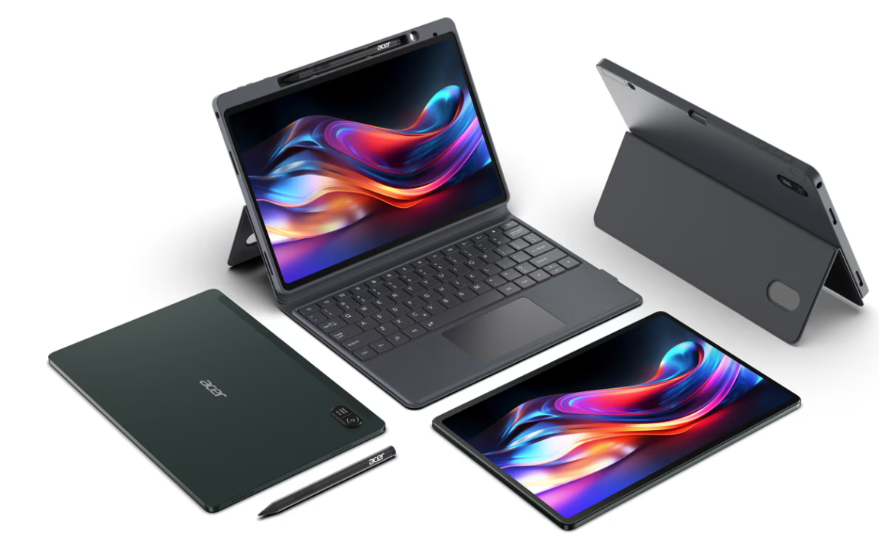
Hardware & Specifications Trends
Display Innovations
Manufacturers prioritized display quality in 2024, with most high-end tablets featuring high-refresh-rate screens and HDR10+ support. Samsung’s AMOLED panels on the Galaxy Tab S10 and Apple’s Liquid Retina XDR and tandem OLED displays on the iPad Pro set benchmarks for vibrant visuals and color accuracy.
Performance Upgrades
Flagship tablets adopted next-generation processors like Apple’s M4 and Qualcomm’s Snapdragon 8 Gen 3, ensuring smoother multitasking and better support for demanding applications. Mid-range models also saw performance gains, often powered by chips like MediaTek’s Dimensity series.
Battery Life and Charging
Improved battery life became a significant focus, with devices like the Galaxy Tab S10 Ultra offering extended usage times. Fast charging became standard across most tablets, while some models, such as the Supernote A5 X2, prioritized sustainability with easily replaceable batteries.
Detachable Devices and Hybrid Solutions
The line between tablets and laptops blurred further in 2024, as detachable devices gained traction. Microsoft’s Surface Pro 10 offered iterative improvements, maintaining its appeal for professionals who value portability and laptop-grade performance.
Additionally, Microsoft’s Surface Pro with Copilot+ took center stage as a detachable option for consumers featuring Qualcomm’s Snapdragon X Elite chipset and AI functionality. Samsung also expanded its detachable Galaxy Book line, integrating its ecosystem with Galaxy smartphones and tablets.
Emerging Trends
Sustainability and Modular Designs
Sustainability emerged as a growing trend, with devices like the Supernote A5 X2 Manta featuring repairable and upgradeable components. This shift toward modularity reflects consumer demand for devices with longer lifespans and reduced environmental impact. Additionally, there has been success with similar dedicated note taking tablets such as ReMarkable, which has its own endcap featured in-store at Best Buy.
Affordability and Accessibility
Brands like Amazon and Lenovo focused on entry-level and mid-range segments. Amazon’s Fire Max 11 targeted budget-conscious users, while Lenovo’s Tab P series aimed to deliver solid performance at competitive prices, particularly in education and entertainment contexts.
Software Ecosystems
Enhanced software integration became a priority, with Google, Apple, and Samsung building seamless ecosystems that connected tablets, smartphones, and other devices. Features like wireless file sharing, cross-device multitasking, and smart home controls gained prominence.
Outlook for 2025
The tablet and detachable market is set for continued growth in 2025, fueled by advancements in display technology, AI integration, and seamless ecosystem connectivity. Manufacturers are expected to focus on balancing premium features with affordability, catering to the diverse needs of users. As foldable smartphones and thin, lightweight laptops continue to improve and encroach on tablet territory, it will be crucial for tablets to capitalize on their unique strengths and deliver compelling value to remain a top choice for consumers in the coming year.
Get more information
About the Author
Nick Harpster
Nick Harpster is a Consumer Electronics Analyst at OpenBrand, specializing in Tablets & Detachables, Smartphones, and Monitors. With over five years of experience in analytics, Nick excels at transforming complex data into actionable insights, empowering clients to make informed decisions in a dynamic market.
Smartphones: 2024 Year-In-Review
Our smartphone year-in-review report recaps smartphone launches, placements, pricing and advertising and promotional activity captured throughout 2024. The report features data and insights from OpenBrand’s Smartphone categories, which feature products sold through the US ecommerce and brick-and-mortar channels.
Read through all the 2024 pricing and promotions insights below or email the report to read later.
- Flagship Launches
- Foldables Take Center Stage
- Sustainability & Longevity
- Chipset Wars & Performance Upgrades
- Affordable Innovation
- Global Challenges & Geopolitical Impact
- The Rise of AI-Driven Experiences
- Looking Ahead
Summary
As the year wraps up, the smartphone market has once again seen steady advancements and shifts in priorities. Key flagship releases included Samsung’s Galaxy S24 series, which focused on enhancing AI performance and photography, and Apple’s iPhone 16 lineup, which introduced incremental improvements like a 6x optical zoom in the Pro Max model. Google’s Pixel 9 series emphasized AI-driven features like advanced photo editing, while Xiaomi’s 14 Ultra offered strong competition in mobile photography with its advanced camera hardware.
Each of these flagship models continued to refine established designs and features, signaling a year of steady evolution rather than dramatic change. Brands remained focused on delivering high-quality experiences while finding ways to differentiate in an increasingly competitive landscape.
Flagship Launches: Refinements and Competitive Edge
Samsung continued to lead the flagship market with its Galaxy S24 series, emphasizing improved AI capabilities and computational photography. The Galaxy S24 Ultra, powered by the Snapdragon 8 Gen 3 globally, delivered professional-grade photography and smarter performance, solidifying Samsung’s dominance. Similarly, Apple’s iPhone 16 lineup focused on incremental upgrades, with the Pro Max introducing a 6x optical zoom periscope lens, enhancing its photographic capabilities.
Google made waves with the Pixel 9 series, furthering its AI leadership through its Tensor G3 chip. Features like advanced real-time photo editing and unique computational photography tools like Magic Eraser demonstrated Google's focus on AI as the foundation of its user experience. Meanwhile, Xiaomi’s 14 Ultra set new standards in mobile photography with a 1-inch sensor and superior low-light capabilities, challenging competitors in the premium segment.
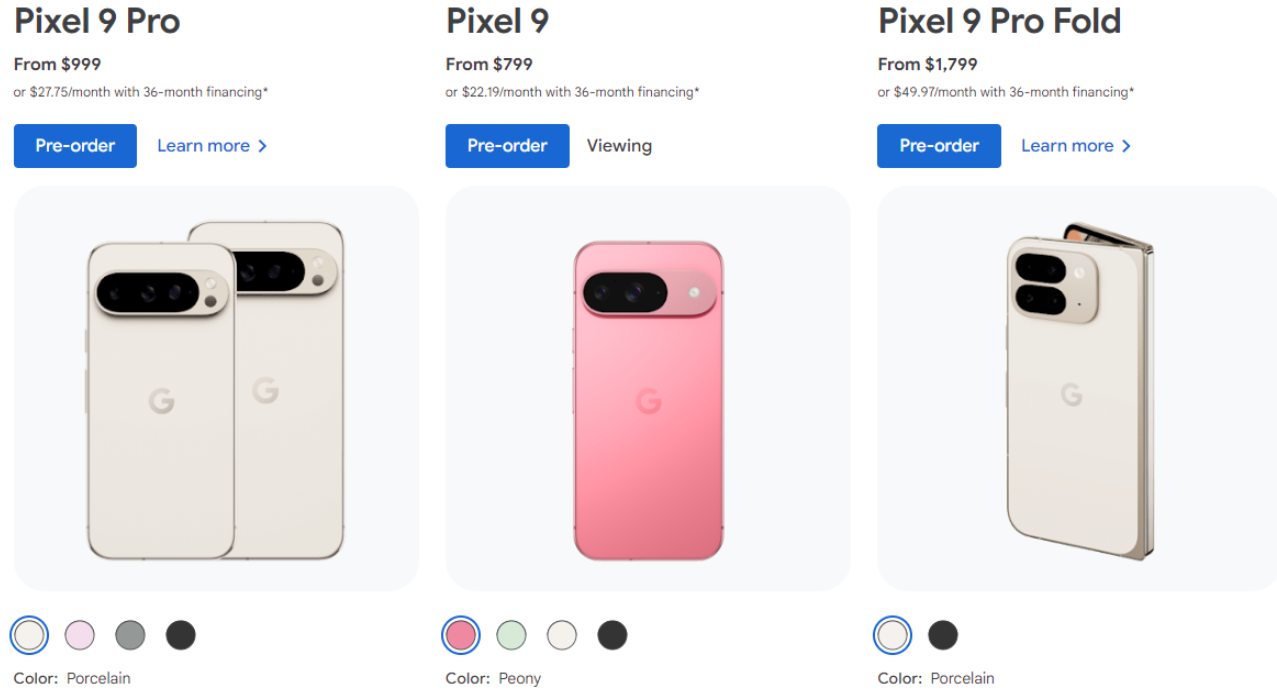
Foldables Take Center Stage
The foldable smartphone market expanded significantly in 2024, with Samsung continuing to lead the segment. The Galaxy Z Fold 6 and Z Flip 6 brought thinner bezels, improved durability, and better battery life, reinforcing Samsung’s position. Meanwhile, affordable foldable models like Samsung's Galaxy Z Flip FE, Motorola's Razr 50 Lite, and Honor's Magic V Lite made the technology accessible to a wider audience, accelerating adoption.
Google entered the foldable space with the Pixel Fold, leveraging its software expertise to deliver a polished user experience. The growing competition in foldables signaled the category's transition from niche to mainstream, with innovation driving consumer interest.
As the race for maintaining the crown on the ever improving and evolving foldable technology continues, there have been rumors that we will see some trifoldable options or even rollables available in the US from Samsung.
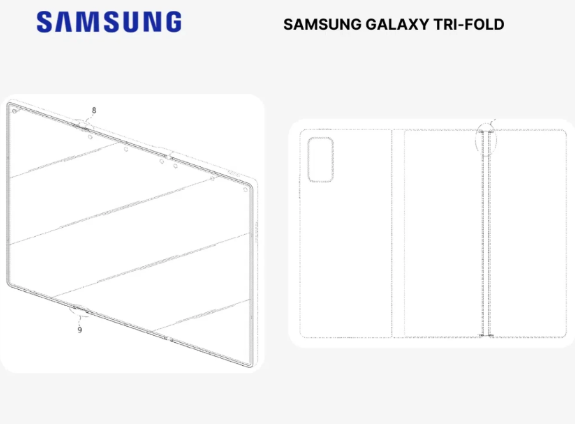
Sustainability & Longevity
Sustainability emerged as a critical theme in 2024, with brands like Fairphone leading the charge. The Fairphone 5 exemplified this shift, offering modular, repairable designs and eco-friendly materials. Major brands, including Samsung, Google, and Xiaomi, committed to extended software support, with promises of four to five years of updates, aligning with consumer demands for durability and reducing e-waste.
Chipset Wars & Performance Upgrades
The year saw fierce competition in the chipset space, with Qualcomm’s Snapdragon 8 Gen 3 and Snapdragon 8 Elite and MediaTek’s Dimensity 9300 and 9400 setting new benchmarks for performance and efficiency. These processors enabled advanced AI features, including real-time photo editing and high-fidelity gaming, elevating the user experience in flagship devices. The growing demand for cutting-edge processing power underscored the importance of hardware innovation in maintaining competitive advantage.
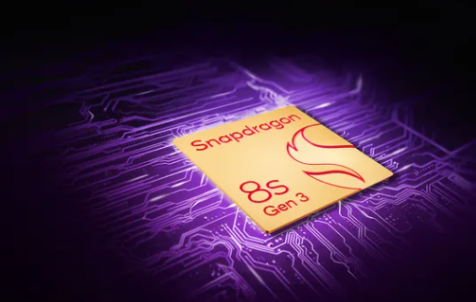
Affordable Innovation
2024 was a pivotal year for making premium features more accessible. Devices like Google’s Pixel 9a and Samsung’s Galaxy Z Flip FE brought high-end specs, including advanced cameras and foldable displays, to more affordable price points. These devices catered to budget-conscious consumers while maintaining quality, expanding market reach for manufacturers.
Global Challenges & Geopolitical Impact
The smartphone market navigated complex global challenges, including inflation, fluctuating currency values, and geopolitical tensions. Chinese manufacturers like Huawei faced continued trade restrictions but showcased resilience with innovative launches like the Mate 60 Pro, featuring a proprietary 7nm Kirin chip. Rising costs of components, such as Qualcomm’s Snapdragon 8 Elite, forced brands to rethink pricing strategies, impacting affordability in some regions.
The Rise of AI-Driven Experiences
Artificial intelligence played a transformative role in smartphones this year, with manufacturers integrating AI into every aspect of the user experience. From Google’s contextual photo editing to Samsung’s enhanced portrait deblurring, AI-driven features became essential differentiators. The growing reliance on AI underscored its importance as a key driver of innovation across the industry.
Looking Ahead
Flagship launches, foldable adoption, and AI innovation defined the landscape, while sustainability and affordability gained traction as pivotal trends. With 2025 on the horizon, the industry is poised for further breakthroughs and continued evolution in response to consumer needs and global challenges. As the smartphone market concludes another year, looking forward to 2025 begs the question of will longer contract lengths and increasing price points on smartphones continue to slow consumers’ upgrades, or if the upcoming year will spark enough innovation to draw consumers in for the latest must have smartphones.
Get more information
About the Author
Nick Harpster
Nick Harpster is a Consumer Electronics Analyst at OpenBrand, specializing in Tablets & Detachables, Smartphones, and Monitors. With over five years of experience in analytics, Nick excels at transforming complex data into actionable insights, empowering clients to make informed decisions in a dynamic market.
